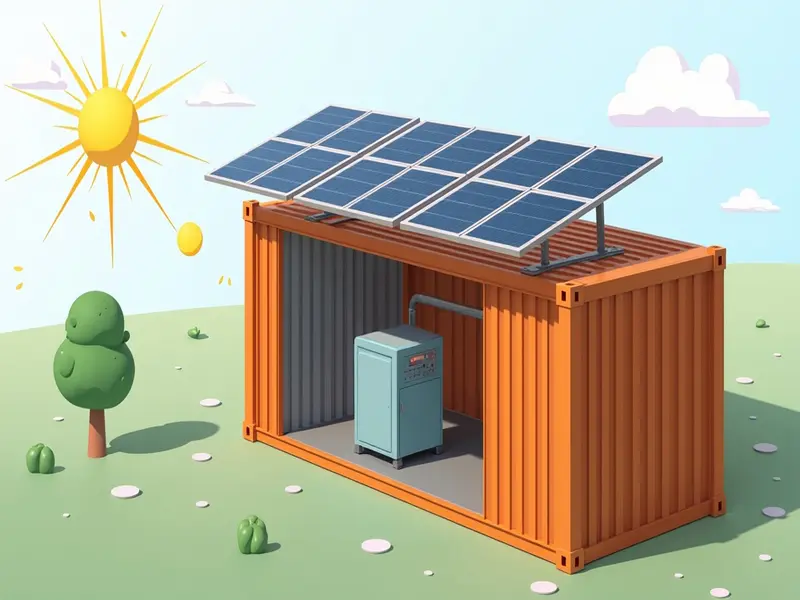The initial introduction toward the sustainable infrastructure has opened the door to realizing the new innovations in remote communication networks. The conventional power solutions that relied on diesel generators or on-grid electricity failed many times in the off-grid situation where reliability and environmental impact mattered. And here comes the portable solar power containers—an innovative technology redefining the way in which we power critical communication systems into the most difficult locations.
The Evolution of Remote Power Solutions
The telecommunications sector has always dealt with the challenges of ensuring network coverage to remote places and keeping the systems operational during a disaster. Diesel generators are a common solution, but their use does pose logistical challenges in terms of fuel transport costs, emissions, and maintenance. Solar energy made for an alternative but early solar generators were not designed for the ruggedness and portability one needed in extreme environmental conditions.
Portable solar containers fill the gap for power generation and in-the-field use. Solar containers provide a complete package of power generation with military-grade robust protection. They are not just solar panels in a box; solar panels, intelligent energy management, rated for weatherproof design and speedy deployment primarily for communication networks. These containers prove clean energy can be practical and strong anywhere-from disaster-ridden areas to the densest rainforests.
Technical Capabilities: Beyond Basic Power Generation
Modern portable PV containers are designed to satisfy the rigors of telecommunications. It is very normal for a system to include high-efficiency monocrystalline solar panels in the range of 5-25 kW, paired with lithium-ion batteries that store energy ranging from 20-100 kWh. This margin allows for scaling it up: the di- mensions intended for smaller units support temporary emergency use in cell towers, while the bigger arrangement can provide satellite communications.
These containers are designed to withstand extremes. They bear an IP65, waterproof rating to survive monsoons, shredding wind in sandstorms, and brutally low temperatures. Advanced thermoregulation systems control their internal temperature even at external conditions ranging between -20 °C to 60 °C. Mobility is yet another occasion: trailer-mounted designs move it by truck, helicopter, or ship, while foldable solar arrays enable the setup to be under 30 minutes in time.
Real-World Impact: Stories from the Field
Disaster Response in Haiti
This action was inspired by a 7.2 magnitude earthquake that hit Haiti on August 14, 2021, and led to the deployment of an International Red Cross solar container with a capacity of 15 kW. Within 72 hours, the system powered cellular networks and satellite links enabling coordination between rescue teams. Unlike diesel generators, the solar solution required no fuel shipments; this was a critical advantage of the system over the diesel generators especially in a region with crippled supply chains.
Connecting the Amazon Rainforest
In the remote Brazilian Amazon basin, Global Satellite Communications has set up a 20 kW solar container for indigenous communities. This installation has a 50 m² solar array and an 80 kWh battery bank, and provides uninterrupted power for LTE towers, thus bridging the digital divide without compromising the delicate ecosystem.
Military Applications in Desert Operations
The modular 10 kW solar containers have been tested for recently tactical desert deployments in conjunction with the U.S. Army. These units minimized fuel dependency by more than 60 percent, thus heightening mission duration and lessening vulnerability to supply convoy ambush. Integrated cybersecurity protocols ensured secure communication channels, even under hostiles.
Designing and Deploying a Solar-Powered Network
The solar container system's implementation demands organized planning very much. This is initiated by a site assessment that will analyze the paths of solar irradiance arriving at that site, terrain challenges, and power needs. For instance, in a mountainous zone, sloping solar panels may be preferred to reduce snow buildup; desert deployments may require dust-resistant components.
The next design phase sees engineers trying to find a balance between energy generation and storage. For example, a telecom tower that consumes 8 kW per day may use a 12 kW solar array coupled with a 48 kWh battery bank to cover periods of cloudy weather. Smart inverters paired with AI-based energy management software efficiently direct energy; they ensure that critical communications equipment receives priority during energy shortfalls.
Container engineering concentrates on making the system durable and practical. Lightweight composite materials minimize transport weight, and modular interiors allow for customization; some units include workstations for technicians. Rapid deployment mechanisms like hydraulic solar panel lifts reduce site complexity for installation by inexperienced teams.
Market Trends and Future Innovations
The solar generator portable market utilized by telecoms is currently witnessing an unprecedented boom and is estimated to grow from 1.2 billion in 2024 to 3.4 billion by 2030. North America leads the way in adoption, owing mostly to military contracts and rural broadband initiatives, while major impetus in the Asia-Pacific is due to increasing mobile networks across India and Indonesia.
Emerging technologies are pushing boundaries:
- Solid-state batteries provide higher energy densities and faster charge times.
- AI-driven predictive maintenance anticipates component failures before they ever happen.
- Hybrid systems combine solar with wind or hydrogen fuel cells for reliability under all weather conditions.
Sustainability remains a core engine. One 25 kW solar container annually offsets 45 tons of CO₂ emissions from diesel alternatives, thus corresponding to their corporate ESG goals and UN SDG targets for affordable and clean energy.
The Road Ahead
Portable solar containers hold transformational possibilities, but challenges still remain. The initial costs are still higher than diesel setups, yet lifetime savings on fuel and maintenance offset this. Energy storage in polar regions, where sunlight is limited, calls for ingenious alternatives, like hybrid systems with wind turbines.
For any organizations thinking of going down this route, piloting smaller systems is a sound first step. Testing in a variety of conditions-temperate humidity to arid heat-will show what design tweaks are required to scale up. Collaborating with local communities and governments will also greatly ensure successful deployments, especially in areas that lack technical expertise.

